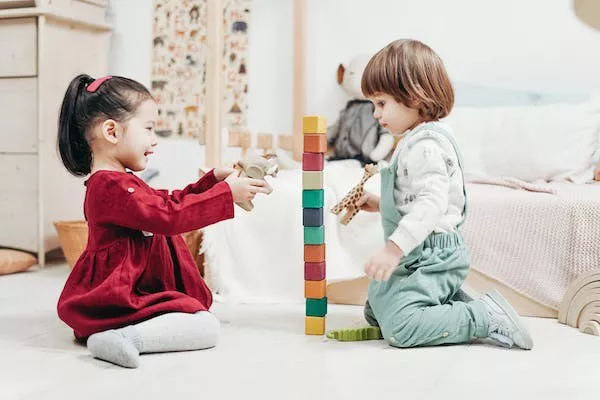Interacting with your baby is not only a joyful experience but also a vital part of their development. At three months old, babies are becoming more alert, responsive, and curious about the world around them. Engaging with your little one at this age helps strengthen the parent-child bond and supports their social, emotional, and cognitive growth. In this article, we will explore various ways to interact with your three-month-old baby.
Eye Contact and Smiling
At three months old, your baby is beginning to recognize faces and develop their social skills. Making eye contact and smiling at your baby is a simple yet powerful way to engage with them. Whenever you interact with your little one, get down to their eye level and maintain eye contact while talking or playing. Smile warmly, and you’ll likely be rewarded with their delightful gummy grin in return.
Talk and Sing to Your Baby
Babies are incredibly responsive to the sound of their parents’ voices. Talking and singing to your baby helps stimulate their language development and provides comfort. Engage in everyday conversations with your little one, describing your activities, and using a soothing, melodic tone. Sing lullabies or nursery rhymes, which not only entertain but also promote bonding and rhythm recognition.
Encourage Tummy Time
Tummy time is an essential activity for your three-month-old baby’s development. It helps strengthen their neck, shoulder, and arm muscles, promotes motor skills, and provides an opportunity for interaction. Place your baby on their tummy on a soft, safe surface and get down on the floor with them. Engage in face-to-face interactions, make funny sounds, or place colorful toys within their reach to encourage them to lift their head and explore their surroundings.
Play Peek-a-Boo
Peek-a-boo is a classic game that babies love at this age. It helps develop object permanence, which is the understanding that an object or person continues to exist even when it’s out of sight. Cover your face with your hands or a cloth and then reveal yourself with a big smile, saying “Peek-a-boo!” This game can elicit giggles and foster a sense of anticipation and surprise.
Introduce Toys and Sensory Exploration
At three months old, babies are discovering their senses and starting to explore objects. Provide them with age-appropriate toys that are safe and visually stimulating. Choose toys with different textures, colors, and sounds. Rattles, soft toys, and toys with mirrors or contrasting patterns can capture their attention and engage their senses. Allow your baby to explore the toys by touching, grasping, and mouthing them under supervision.
Read Board Books
Introducing board books to your baby at three months old can lay the foundation for a lifelong love of reading. Choose books with simple, colorful pictures and textures. Sit with your baby in a comfortable position and read aloud in a gentle, expressive voice. Point to the pictures and describe them, encouraging your baby to focus on the images and listen to your words. Reading together not only enhances language skills but also fosters a nurturing and calming environment.
Respond to Cues and Babbling
Babies communicate through cues, gestures, and early babbling. Pay attention to your baby’s signals and respond to them promptly. If they coo, babble, or make sounds, mimic their sounds and engage in back-and-forth “conversations.” Respond with smiles, nods, and gentle touches to let your baby know that you’re listening and interested in their communication attempts.
Provide Gentle Touch and Cuddles
Physical touch is a powerful way to bond with your three-month-old baby. Regularly hold your baby, cuddle them, and provide gentle caresses. Skin-to-skin contact, such as holding your baby against your bare chest, has been shown to promote emotional well-being and a sense of security. Physical touch helps your baby feel loved, nurtured, and connected to you.
Take Walks and Explore the Environment
As your baby’s visual awareness expands, taking them on walks or outings can be exciting and stimulating. Use a stroller or a baby carrier to explore the world together. Point out different objects, describe what you see, and encourage your baby to focus on the surroundings. Fresh air and new sights can be invigorating for both you and your little one.
Remember Individual Preferences and Limits
While the general tips mentioned above can help you interact with your three-month-old, it’s important to remember that every baby is unique. Observe and learn your baby’s individual preferences, cues, and limits. Some babies may enjoy more active play, while others prefer quiet, calm interactions. Respect their boundaries and provide them with the right balance of stimulation and rest.
Conclusion
Interacting with your three-month-old baby is an opportunity to nurture their development, strengthen your bond, and create precious memories. From making eye contact and talking to them to playing games and reading books, there are numerous ways to engage with your little one. Remember to follow their lead, respond to their cues, and provide a nurturing and stimulating environment. Enjoy this special time of discovery and growth as you embark on the wonderful journey of parenthood.



